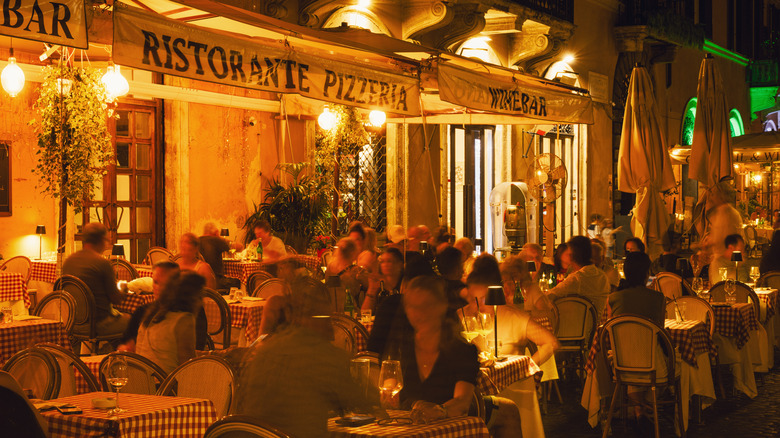Rick Steves Warns Against These 3 Words On European Restaurant Signs
When it comes to advice on traveling and eating abroad, Rick Steves has earned his credibility. The beloved travel writer and TV host has guided millions through Europe with practical tips gathered from his real-world experience. Steves has plenty to say about what restaurants to avoid when dining out in Europe. In a 2025 YouTube video, he shared a three-word phrase you should keep an eye out for while traveling. It seems like a relatively harmless phrase, but consider dining elsewhere when you see "food never frozen" on a menu.
"Food never frozen" sounds like a good thing, right? Never frozen food should taste fresher; however, this red flag isn't so much about quality, but rather context. Steves explains that restaurants boasting "never frozen" ingredients are often tourist traps trying to sound more authentic than they actually are. It's kind of like seeing the phrase "all natural" on a food product label at the grocery store. In theory, this should mean something, but in reality, phrases like these are used as marketing fluff.
If you find yourself in a busy, city center or historic zone, the "never frozen" claim might pop up on menus that boast several different languages and a huge variety of plates — two other red flags to avoid touristy restaurants. And remember, quality ingredients are sometimes flash frozen — especially items like seafood. For example, a good bistro might serve flash-frozen fish caught earlier that week rather than "fresh" fish that's been sitting around for days.
How to avoid tourist trap restaurants in Europe
So, if "never frozen" is not a good sign, what should smart travelers seek out instead? According to Steves, skip the flashy signs that show photos of all the food. Big menus might be helpful when dining with a group or family that has diverse preferences, but these typically don't offer the most authentic experiences. A short, rotating menu often means the kitchen is working with what's in season or available that day.
When you encounter hosts or servers standing outside, calling out to you and trying to flag you down, keep walking. In areas with a high concentration of tourist restaurants, Steves recommends walking at least three blocks away from the main drag for smaller, local options. This is also true for street food in Europe – you'll have a more affordable experience on side streets or in laidback neighborhoods.
You want the food and restaurant to speak for itself. There are quiet cues that let you know you're in the right place, such as a handwritten menu or a chalkboard with limited dishes. Do you hear the local language being spoken, and notice a dining room full of locals? Green flag! There are certain rules to follow when eating abroad (be careful about where you eat ice cream in Rome), but you can always rely on instinct. Take a glimpse at what others are eating to determine if the food looks and smells good. That said, you don't always have to eat at the most authentic restaurant – there's a time and place for a McDonald's McBaguette, too.

